Muscle Bomber / Saturday Night Slam Masters had moderate success in the arcade. It certainly had a following among wrestling game fans. Capcom learned a lot from the reception of the first title. They made a few tweaks, added more multiplayer options, and released the Muscle Bomber Duo upgrade. As fun as it was, and as well as the Super Famicom / Super Nintendo version sold they knew that they had to change their approach for a proper sequel. Muscle Bomber had the control, and gameplay of a brawler-meets-wrestling game. If you had played any of the classic Capcom brawlers; Final Fight, Captain Commando, the King of Dragons, Warriors of Fate, Alien vs Predator, etc. then you could instantly pick up and play Muscle Bomber. The downside was that brawler fans were used to fighting waves of opponents, rather than one person for minutes on end. It felt kind of stale in that regard. Of course in the early ‘90s the brawler had also taken a back seat to the fighting game. Capcom needed to approach their wrestling sequel from a completely new angle.
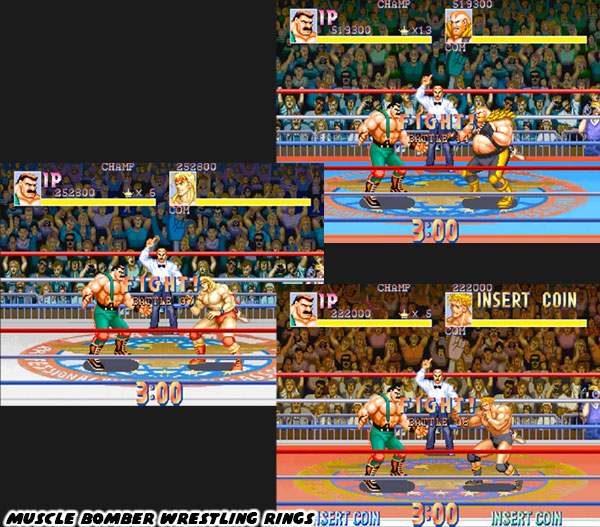
The first thing the studio did was decide that Super Muscle Bomber - The International Blowout needed to be a fighting game. The sprites, control, and animation from the first game were easily adapted for 2D combat. The levels themselves also had to change drastically. In the original MB the matches were supposed to take place all around the world. The problem was that the stages all looked the same with the exception of the colors of the ropes, and ring. In Final Fight, and the other brawlers actually made players feel like they were traveling to new locations. Super Muscle Bomber would have a few traditional-looking rings, however every background was original. For example the British giant Titan the Great fought inside a palace, with the Queen of England in attendance. The Russian Aleksey Zalazof fought in the snow, and the mat was made of ice. The wild Missing “IQ” Gomez fought in the jungle, with ropes made of vines. As with other great fighting games every stage told a story through its details. Unlike the first game Capcom made sure that the audiences were unique in each stage. Some mats were made of metal, wood, or stone, and some of the ropes were replaced with chains.
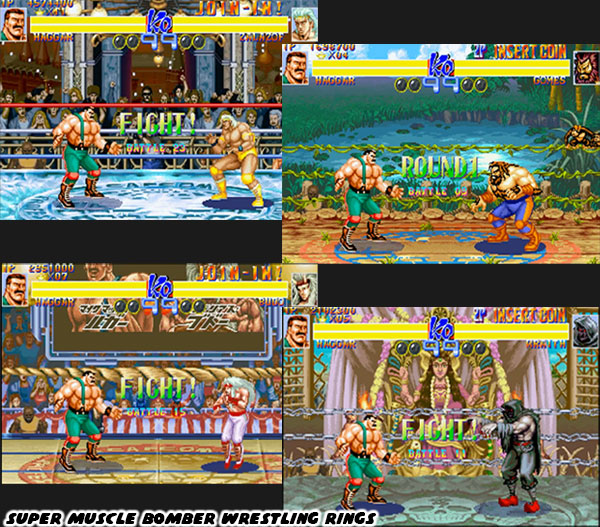
The other, and more important visual edit that Capcom did was return to Tetsuo Hara’s original designs. They were featured in all of the win, and loss character profiles. Unfortunately there were no makeovers for the original sprites. All of the sprites from the first game were brought over. They were created by the Capcom art team, and had the softer edge of all the classic Capcom brawlers. The new characters introduced for Super Muscle Bomber were much bolder. They had the proportions, muscularity, and shading that we had come to expect from Mr. Hara’s renders. For example the former CWA champion Victor Ortega returned, this time as a playable character. Capcom stuck closely to Mr. Hara’s original design which was previously only seen in the opening animation of the Super Famicom version of MB. For Super Muscle Bomber Capcom created what was arguably the most muscular sprite ever. His proportions were nowhere near the way that they presented him in the ending scene of the original Muscle Bomber. To show that he was competing fairly in the tournament he was designed wearing armored trunks, and not the CWA belt.
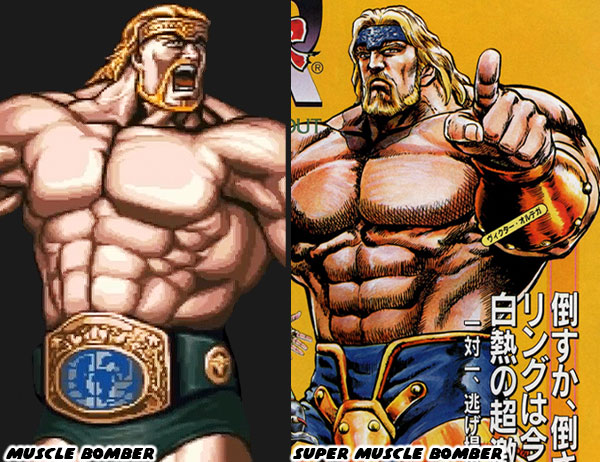
Two of the new characters; Rip Saber, and
The Wraith were members of the Blood Wrestling Association. They would be joining Astro, and Kimala the Bouncer in trying to takeover the CWA. The BWA characters were reflective of the “hardcore” wrestling movement. This really took off in Japan first in the early ‘90s with promotions like
Frontier Martial Arts Wrestling (FMW), and then later in the US with Extreme Championship Wrestling (ECW). Many wrestling purists in Japan considered this garbage wrestling. Mr. Hara saw a lot of potential to make over-the-top, almost Hokuto no Ken-type villains, for Capcom with these new BWA opponents.
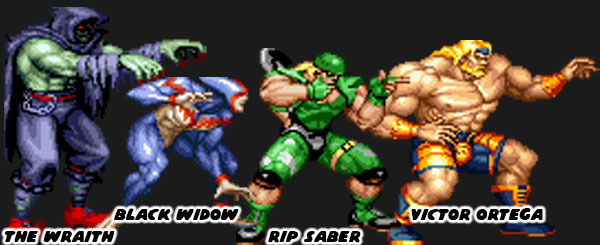
Hardcore wrestlers were notorious for bleeding in matches. They would use foreign objects at every opportunity to cut each other open. Light tubes, panes of glass, razor wire, and cinder blocks were often used to beat each other half to death. The former soldier Rip Saber was one such dirty character. He would hack at opponents with his combat shovel. He would also toss grenades at opponents, similar to Rolento, one of the bosses in Final Fight. The Wraith was a different kind of hardcore wrestler. He was akin to the
original Sheik, or his nephew
Sabu. He was a callback to the reckless foreign wrestlers. The Wraith used his height, and ghoul-like powers to absolutely shred opponents. We would see lots of pro wrestling characters over the decades, but Mr. Hara was ahead of the curve when he included hardcore archetypes into a fighting game way back in 1993. We wouldn’t see these types of villains again until
Exodus from ARIKA’s Fighting Layer in 1998.
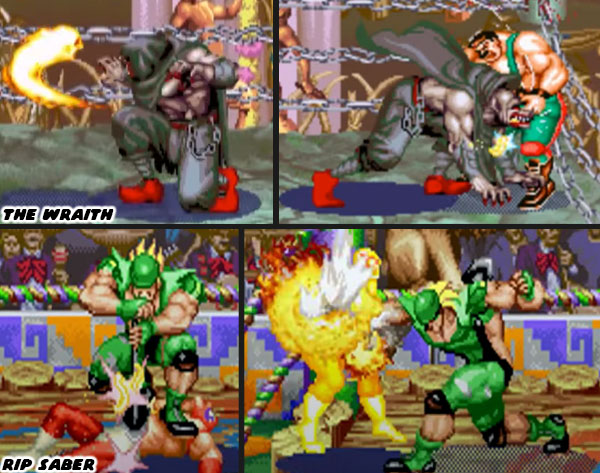
The other thing Mr. Hara was known for was creating eccentric fighters. Hokuto no Ken was known for its hyper masculine designs, and story. There were however many characters that were effeminate, had long hair, and wore makeup in the series as well. They were supposed to conjure images of the glam metal bands like
Poison, and
Mötley Crüe. In other cases the homoerotic overtones were very obvious,
especially with characters like Yuda. That didn’t always translate to anime, but it did let audiences know that sometimes the most beautiful fighters were also the most dangerous. Mr. Hara wanted to throw a curveball into the new lineup with this logic. Missing “IQ” Gomez was the strange character in the first game. Super Muscle Bomber needed another odd character. Thus he gave us a lanky, androgynous wrestler named Black Widow.
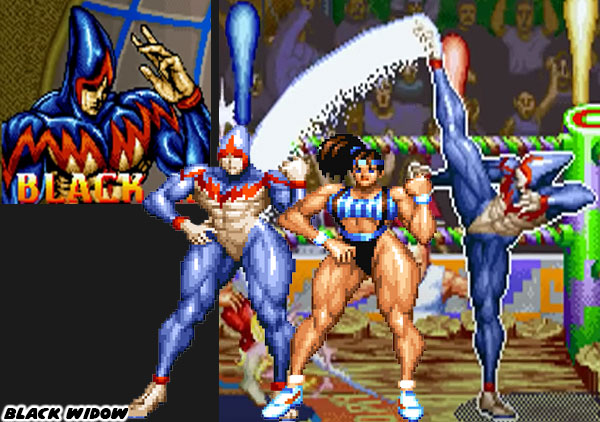
B. Widow had a strange latex-like costume, and mask. She was tall too, 6’ 7” to be precise. This made her taller than most of the lineup including Sheep the Royal. She was a hair taller than Mike Haggar, Kimala the Bouncer, and even Victor Ortega. Of course the game had actual giants. The Wraith was 7’ 2”, and Titan the Great was 7’ 9.” B. Widow was muscular, but lean. She moved awkwardly, and had strange poses. She also had an odd digitized voice that we could hear before, and after matches. These things made her sex, and gender hard to figure out. Every other character had a deep masculine voice in the game. We wouldn’t see B. Widow’s true identity until the end of the game. She took off her mask and revealed that she was the only female in the tournament. As Mr. Hara was well versed in wrestling history I would argue that
he based her on Mariko Yoshida. Audiences wouldn’t see another massive female in the Street Fighter universe until 2023 when we got
Marisa in Street Fighter 6. She by the way was 6’ 8”.
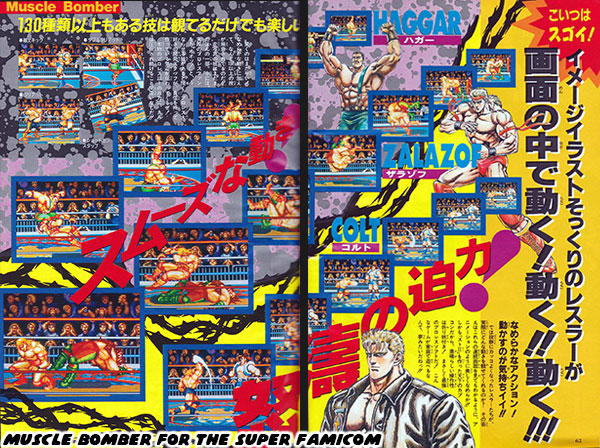
The new character designs, and stages were welcome, but that there was much more to making a good fighting game. The animation, and balance were decent in MB, but it needed a lot of refinement for Super MB. This was especially true if it were to appeal to fans of Street Fighter. The other thing that the game needed were special attacks. Muscle Bomber wasn’t just a wrestling game, it had to have characters, and moves that were every bit as amazing as the ones in Street Fighter. If Ken, and Ryu were head-and-shoulders above the greatest karate masters ever, then how much better did the Mysterious Budo have to be over other Japanese wrestlers? Or how much more of a high flyer did El Stinger have to be when compared to the greatest
lucha libre enmascarados? Thankfully Capcom had answered this right away.
Every character in the original Muscle Bomber had a special attack that were plausibly impossible. These attacks were expanded in Super MB. Some characters had sweeps, and tackles. Many had spinning grapples that would have made Zangief proud. Some even had ranged attacks. Black Widow for example had a fireball-like ranged web attack that allowed her to stun, and even draw opponents closer. This move predated
Ed’s “Psycho Snatcher” special attack in Street Fighter V.
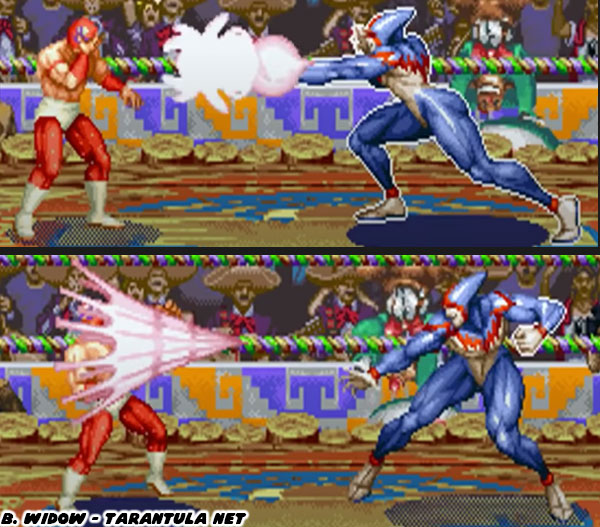
Capcom, and their fans certainly believed in their game. They made sure to promote it on the convention circuit, and all of the media outlets. The publisher made a few rare collectables, including some posters, and small plastic figures. They even made plush figures that could be found in crane games. These items were mainly Japanese exclusives. Sadly the following that Capcom hoped for never materialized. The bar that Street Fighter II set was impossibly high to beat. Well to be honest, the bar that Super SFII set was high. It addressed the control, combo, balance issues from earlier SFII releases (Champion, Turbo). It was obvious how much better Super MB was when compared to the first edition of SFII. The Muscle Bomber series would build a cult following, but it was not the massive hit that the company wanted it to be. It would remain a fondly remembered title to audiences from the arcade generation. Like Rival Schools,
Star Gladiator, Power Stone, and other gems from the studio, the hope for a reboot was the only thing that remained.
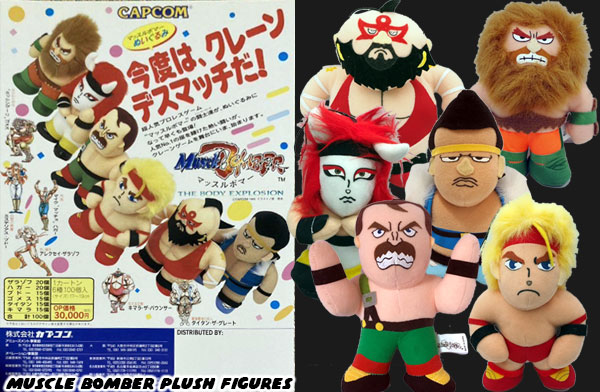
I was a big fan of the series. It married my love of the Street Fighter universe, pro wrestling, and the art of Tetsuo Hara. I never collected too may Muscle Bomber items, aside from the guides. I hoped to get all the plush figures someday. The MB item from my collection that I’m most proud of was a poster of the original release. Capcom didn’t design too many posters for it, especially when compared to the number that they released for SFII. Sadly there was never a Super Muscle Bomber poster to the best of my knowledge. I spent years hunting down the Ortega poster because it featured the original Tetsuo Hara art. More important it featured his original design for the CWA championship belt. As an obsessive fan of Street Fighter I made myself a promise. One day I would own a replica of that belt. Going back to 2008 I started work on an illustration of it. Little by little I spent more than a decade on that piece. I recreated as many tiny details as I could pull from screen grabs. This was in the hopes that I could get my vector file to a belt maker someday. I didn’t touch that illustration again until a few years ago. It was because my working conditions had changed dramatically.
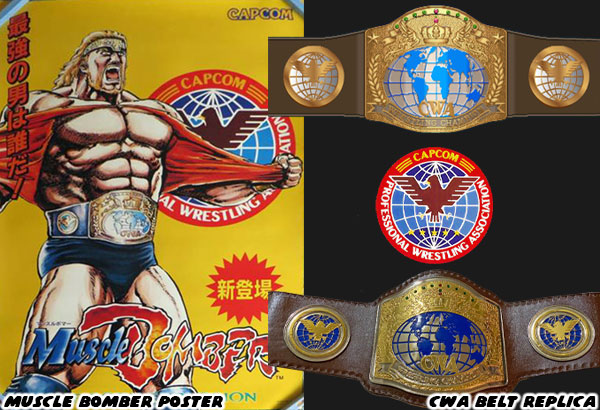
The office that I used to travel to had closed down due to COVID-19. Half the staff was moved to Canada. Many friends, and coworkers were let go. Those that remained were put on remote access. After years of working from home I could feel myself going stir crazy. No matter how many games I played, or how much I wrote, or drew it just didn’t feel rewarding. I knew that I needed an extra special treat to break out of the depression cycle. I bit the bullet, and got the blessing of my wife to commission a belt maker. Not long after I was holding the CWA title. It was perfect down to the tiniest detail. I wish I could share with you the feeling that it gave me. One day I hope to go to a fighting game tournament in either Zangief, or Mike Haggar cosplay with it. It would be great to see you there.
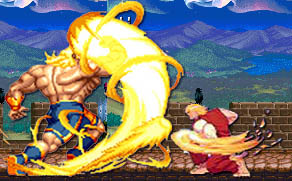
I also have a long-term goal. Many years from now I’d like to visit Japan with my family. If there was a chance that Mr. Hara would autograph the belt then I would bring it with me in a heartbeat. I think it’s good to set goals, but it’s also fun to have dreams. If I can get enough people talking about Muscle Bomber then maybe we’ll see some wrestlers turn up in the Street Fighter series again. What do you think? Should Capcom take another crack at this game, or perhaps other fighters like Vampire / Darkstalkers, and Rival Schools? I’d like to hear about it in the comments section. As always if you would like to sponsor me
please visit my Patreon page and consider donating each month, even as little as $1 would help make better blogs and even podcasts!






















No comments:
Post a Comment